The Fambong Lho Wildlife Sanctuary in Sikkim is a spectacular place that has been developed and maintained with a calm atmosphere that considers the environment and its inhabitants. This reserve covers 50 kilometre square and ranges from 1,800 to 2,700 metres. It is home to animals such as the red panda and Himalayan tahr.It is a prime area of conservation and a marvel to nature lovers using eco-tourism as a tool to discover the brilliance of Himalayan beauty.
Quick Details About Fambong Lho Wildlife Sanctuary
Fambong Lho Wildlife Sanctuary Timings: 9:00 A.M. to 4:00 P.M.
Best Time to Visit: The best months to visit are between March and June or September and November when the weather is good and animal sightings are plentiful.
Entry Fee: ₹20 for Indian nationals and ₹200 for foreign nationals
Location
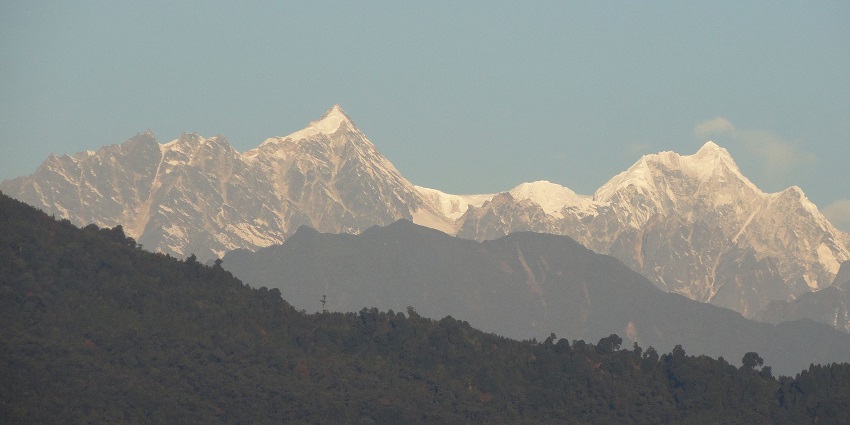
Photo : Yash O 99 / Wikimedia Commons
Fambong Lho Wildlife Sanctuary is in the eastern Himalayas of Sikkim, India, 25 km from the state capital, Gangtok. The sanctuary is located in the foothills of the Kanchenjunga mountain, providing breathtaking vistas and a diverse ecosystem. Its easy accessibility from Gangtok allows visitors to discover its verdant woods and varied fauna while taking in the picturesque surroundings.
Suggested Read: Wildlife Sanctuaries In Sikkim
How To Reach Fambong Lho Wildlife Sanctuary
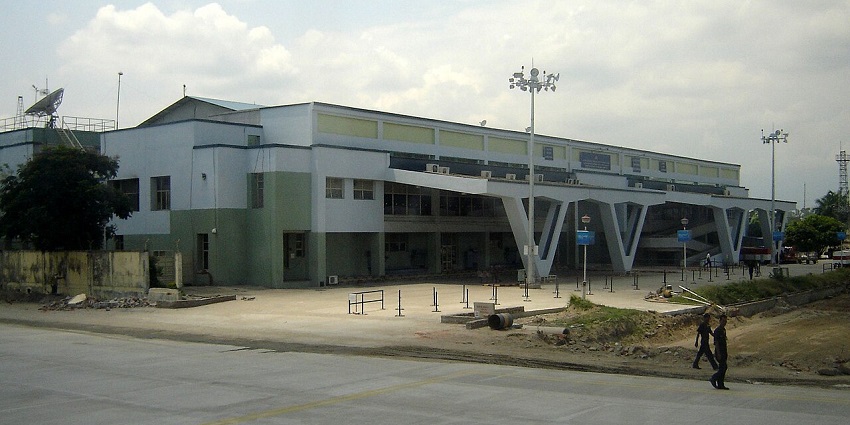
Photo : Abymac / Wikimedia Commons
By Air: The nearest airport is Bagdogra Airport (IXB), approximately 124 kilometres from Gangtok. You may rent a taxi or take a shared cab to Gangtok.
By Train: The next central railway station is New Jalpaiguri (NJP), about 120 km from Gangtok. Taxis and shared taxis are accessible to Gangtok from NJP.
By Road: Gangtok is well-connected with major cities like Siliguri and Darjeeling. You may take a cab or a bus to Gangtok and drive to the sanctuary, around 25 km outside town.
Things To Do In Fambong Lho Wildlife Sanctuary
Visitors can indulge in the following activities available in Fambonglho Wildlife Sanctuary:
1. Trekking
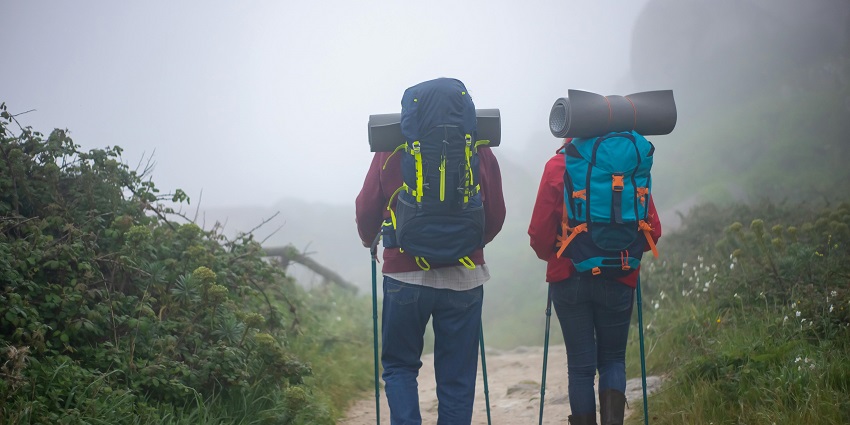
Photo : Kampus Production / Pexels / Image For Representation Only
During your thrilling trekking experience in the natural grandeur of the eastern Himalayas, you may encounter rare animals like the red panda and the Himalayan tahr. The trek offers breathtaking views of the snow-capped Kanchenjunga mountain and lovely scenery. The moderate to complex paths accommodate various ability levels, making it an excellent excursion. The trip energises and provides a profound connection with the peaceful natural surroundings.
Suggested Read: Your Complete Guide For Trekking In Gangtok
2. Birdwatching
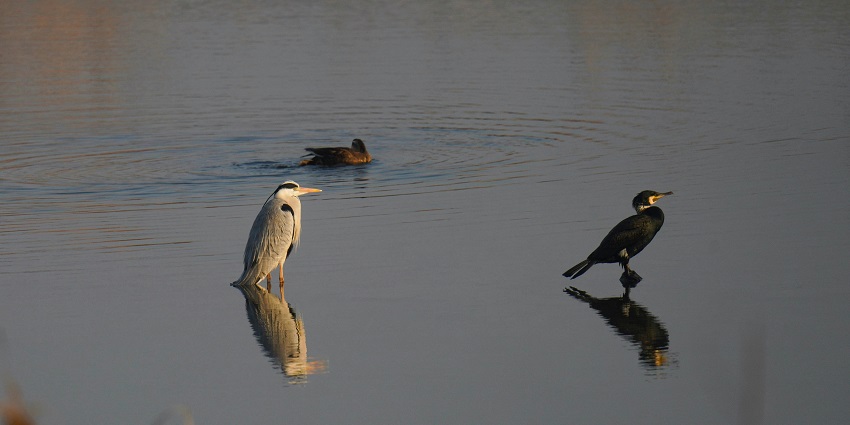
Photo : Daejeong Kim / Daejung Kim/ Image For Representation Only
Birdwatching at Fambong Lho Wildlife Sanctuary is a fascinating experience for avian aficionados and environment lovers. The sanctuary’s various habitats, ranging from deep woods to open meadows, attract many bird species. Keen watchers can identify the colourful Himalayan monal, the secretive blood pheasant, and the lovely spotted dove. Early mornings and late afternoons are perfect for birding since they provide the finest opportunities to see these intriguing species in their native environment.
3. Nature Photography
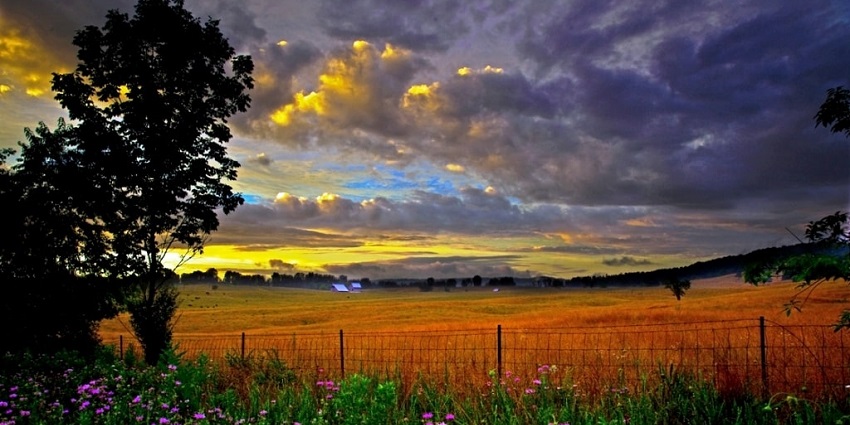
Photo : Forest Wander / Wikimedia Commons / Image For Representation Only
Nature photography in Fambonglho Wildlife Sanctuary offers a unique opportunity to capture the raw splendour of the eastern Himalayas. The sanctuary’s numerous environments, ranging from lush woods to alpine meadows, provide excellent settings for photographers. The opportunity to capture uncommon animals such as the red panda and Himalayan tahr adds a distinctive aspect to your portfolio. Early morning mist and golden hour light highlight the natural surroundings, creating dramatic and stunning photographs.
Suggested Read: Your Travel Guide Into Barsey Rhododendron Wildlife Sanctuary
Places To Visit Around Fambong Lho Wildlife Sanctuary
Here are some must-see attractions around Fambong Lho Wildlife Sanctuary:
1. Gangtok
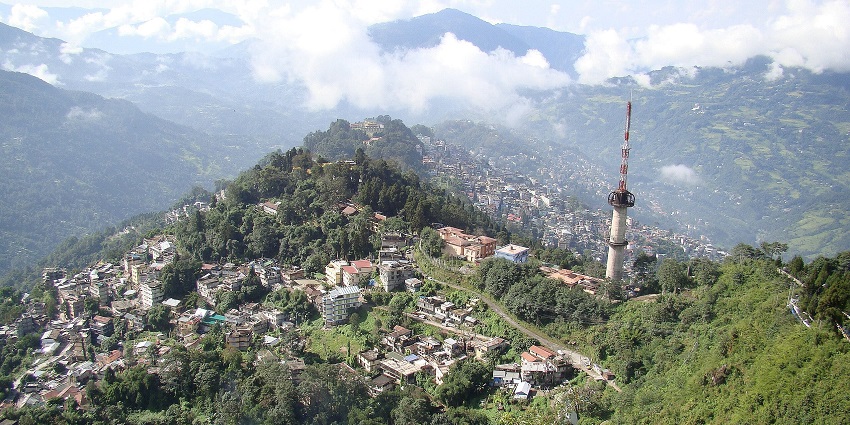
Photo : Kailas 98 / Wikimedia Commons
Gangtok, Sikkim’s bustling capital, is a lovely hill station in the eastern Himalayas. The city, known for its breathtaking vistas of the Kanchenjunga mountain, combines modernism with traditional charm. Visitors may visit the Enchey Monastery, Rumtek Monastery, and lively M.G. Road, lined with stores and restaurants. Gangtok also serves as the entrance to adjacent natural beauties like Tsomgo Lake and Nathula Pass. With its rich Tibetan history, lush scenery, and inviting environment, Gangtok is an excellent starting point for experiencing Sikkim’s natural beauty and cultural legacy.
Things to Do: Explore monasteries, shop on M.G. Road, and enjoy panoramic views from Tashi View Point.
2. Tsomgo Lake
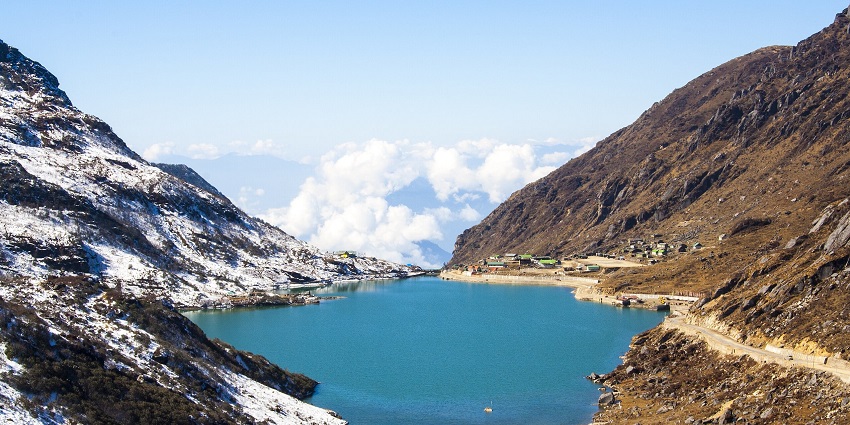
Photo : Indrajit Das / Wikimedia Commons
Tsomgo Lake, also known as Changu Lake, is a magnificent glacial lake around 38 km from Gangtok, Sikkim. Nestled at a height of 3,753 metres, it is flanked by snow-capped peaks and lush alpine meadows, providing stunning vistas. The lake is a famous tourist attraction due to its tranquil beauty, which people consider sacred. During the winter, it becomes a frozen expanse, whilst, in the summer, it reflects the brilliant colours of the surrounding vegetation. Visitors may enjoy yak rides and visit neighbouring sights such as Baba Harbhajan Singh Temple.
Things to Do: Admire the serene glacial lake and take a scenic yak ride.
Suggested Read: Offbeat Places Near Gangtok
3. Baba Harbhajan Singh Temple
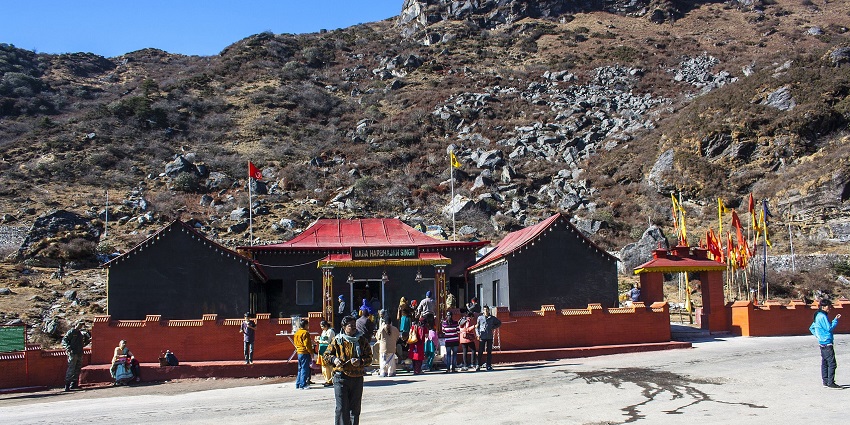
Photo : Indrajit Das/ Wikimedia Commons
Baba Harbhajan Singh Temple, located around 56 kilometres from Gangtok, is a revered shrine dedicated to Harbhajan Singh, an Indian soldier who died in 1968. Known as the “Sardar of Nathula,” his soul is said to guard and guide the soldiers there. The temple, which stands at an elevation of 13,123 feet, attracts believers and visitors who come to pay their respects and seek blessings. The place is primarily known for its gorgeous surroundings, which include breathtaking vistas of the Himalayan ranges.
Things to Do: Pay respects at the revered shrine and enjoy scenic Himalayan views.
4. Tashi View Point
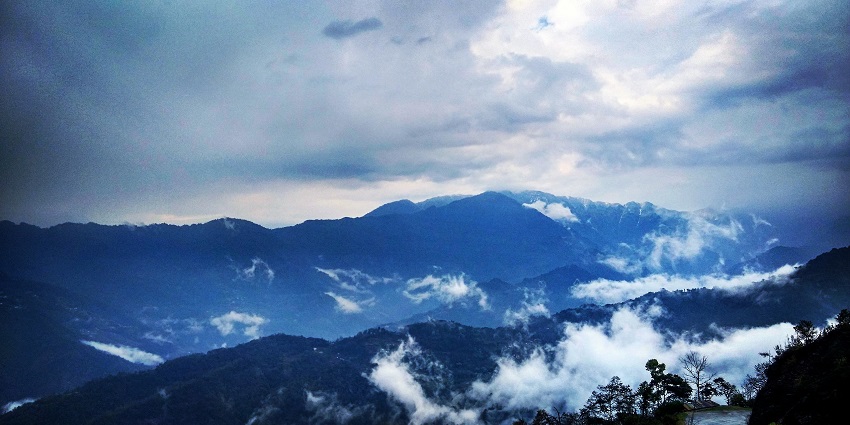
Photo : Robin S Kishore / Wikimedia Commons
Tashi View Point, located around 8 km from Gangtok, provides spectacular panoramic views of the beautiful Kanchenjunga range, the world’s third-highest mountain. Perched at 2,573 metres, it is a favourite site for dawn and sunset views, with a breathtaking backdrop of snow-capped mountains and green valleys. The viewpoint is easily accessible by road and has well-maintained observation spots where visitors may take unforgettable images.
Things to Do: Enjoy stunning sunrise and sunset views over the Kanchenjunga range and capture breathtaking mountain vistas.
Suggested Read: Explore A Different Side Of Sikkim By Witnessing The Nightlife In Gangtok
Where To Stay
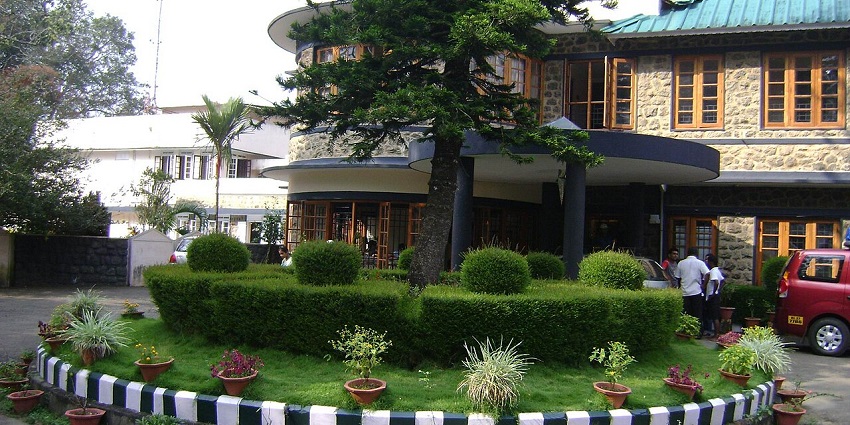
Photo : Mangesh Nadkarni / Wikimedia Commons / Image For Representation Only
Consider staying in Gangtok, the following central town near Fambong Lho Wildlife Sanctuary. From cosy guest houses like Hotel Tibet or Summit Denzong Hotel to lavish lodgings at The Elgin Nor-Khill or Mayfair Spa Resort & Casino, there are options to suit all budgets. These lodgings give convenient access to the sanctuary and various facilities, such as comfortable rooms, local food, and breathtaking views of the surrounding mountains.
Where To Eat
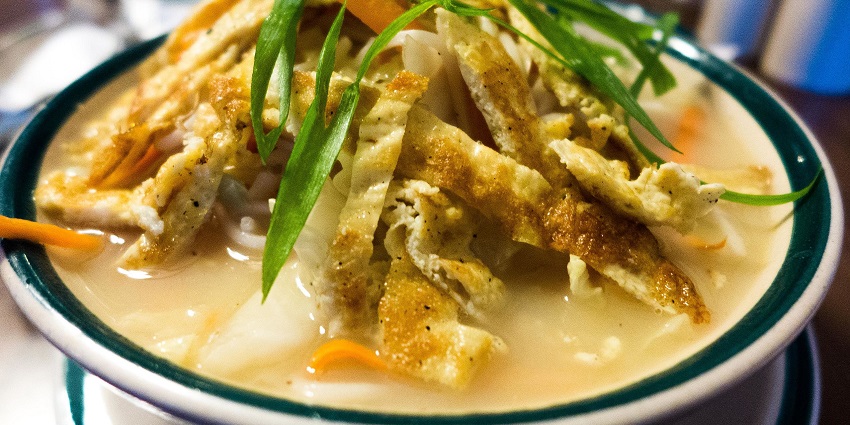
Photo : Sharada Prasad CS / Wikimedia Commons / Image For Representation Only
Gangtok, near Fambonglho Wildlife Sanctuary, has a variety of food alternatives. The Taste of Tibet, a popular local restaurant, serves real Sikkimese food. The Cafe Live & Loud and The Dragon Restaurant blend Indian and foreign flavours. Roll House or Ramen House provide a more relaxed eating experience. Each location has a distinct menu and a cosy setting, offering a pleasant lunch after a day of exploring.
Suggested Read: Discovering The Best Food In Gangtok
Other Factors To Consider
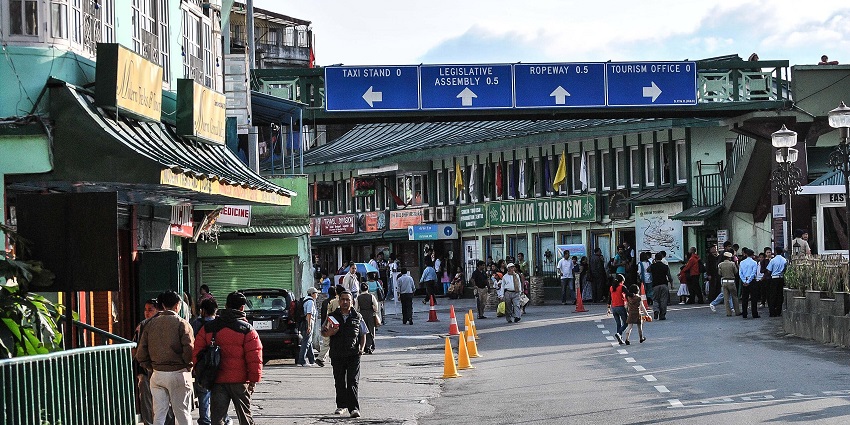
Photo : Sujay 25 / Wikimedia Commons / Image For Representation Only
Average Cost of the Trip
A journey to Fambonglho Wildlife Sanctuary typically costs between ₹3,000 and ₹5,000 per person per day, which includes transit from Gangtok, hotel, and admission fees. This estimate includes transportation, housing in low to mid hotels, and essential meal expenditures. Costs might vary depending on your vacation style, kind of lodging, and extra activities.
Tips for Travellers
- The weather can be cool, especially at higher elevations, so bring layered clothing and warm gear.
- Some rural regions may not take credit cards, so bring enough cash for small purchases.
- To avoid altitude sickness, acclimatise to higher elevations gradually.
- Ensure you have the proper permits for entering protected regions and high-altitude places.
- Keep a safe distance from animals and don’t feed them.
- Be aware of local customs and traditions, especially while visiting religious places.
- Drink lots of water to stay hydrated, especially at higher elevations.
Fambong Lho Wildlife Sanctuary provides a beautiful experience with breathtaking scenery, diversified fauna, and a tranquil ambience. It promises an excellent trip for environment enthusiasts, with activities ranging from trekking and birding to visiting neighbouring landmarks and many more exhilarating memories. Book your trip with TripXL, your reliable partner in creating flawless experiences for a seamless and wonderful experience.
Cover Photo: Photo : Dibyendu Ash / Wikimedia Commons


 WhatsApp
WhatsApp
 Twitter
Twitter









